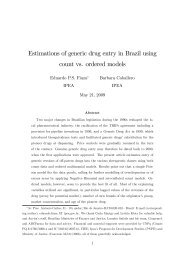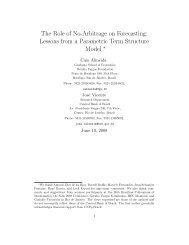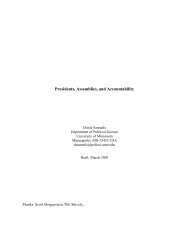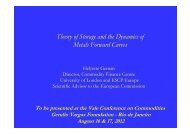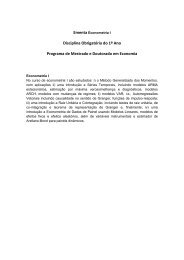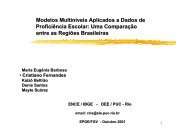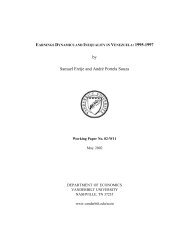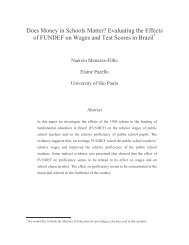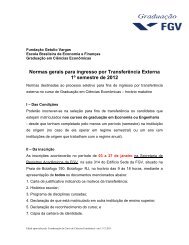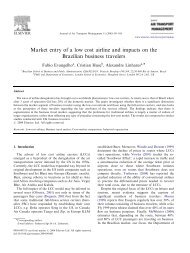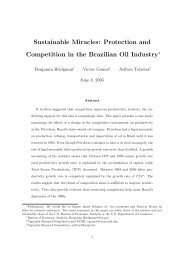Dynamic Hedging with Stochastic Differential Utility
Dynamic Hedging with Stochastic Differential Utility
Dynamic Hedging with Stochastic Differential Utility
Create successful ePaper yourself
Turn your PDF publications into a flip-book with our unique Google optimized e-Paper software.
Of course, replacing equation 17 into equation 7 gives:<br />
θ TWSDU<br />
jt<br />
= −e −r(T i−t) (υ t υ 0 t) −1 υ t σ 0 t<br />
6 CONCLUSIONS<br />
"<br />
π jt − R −1<br />
jt<br />
P I<br />
i=1 ω itπ it<br />
P I<br />
i=1 ω itRit<br />
−1<br />
In this paper we study the dynamic hedging problem using three different<br />
utility specifications: stochastic differential utility, terminal wealth utility,<br />
and a proposed utility which links both approaches. In all cases, we assume<br />
Markovian prices, as in Adler and Determple (1988). As a consequence of<br />
this assumption, we escape from a myopic hedging problem at each time.<br />
Furthermore, depending on the specification of the utility function, we must<br />
use different Hamilton-Jacobi-Bellman, HJB, equations.<br />
<strong>Stochastic</strong> differential utility, SDU, where we maximize consumption over<br />
time as in Ho (1984), impacts the pure hedging demand ambiguously, because<br />
SDU parameters add both in the denominator and the numerator of the<br />
optimal ratio.<br />
#<br />
.<br />
We see that SDU decreasesthepurespeculativedemand,<br />
because risk aversion increases.<br />
We also show that consumption decision<br />
is independent of the hedging decision in the sense that we can split the<br />
program into two independent programs, one for the consumption and the<br />
other for the optimal hedging. In this case, if the drift of futures prices is<br />
zero, there is no obvious impact on the optimal hedge.<br />
Inthesecond-typeutilitycase,wederive a general and compact hedging<br />
formula, which nests all cases studied in Duffie and Jackson (1990). This formula<br />
may include the following particular assumptions found in DJ: Gaussian<br />
28




